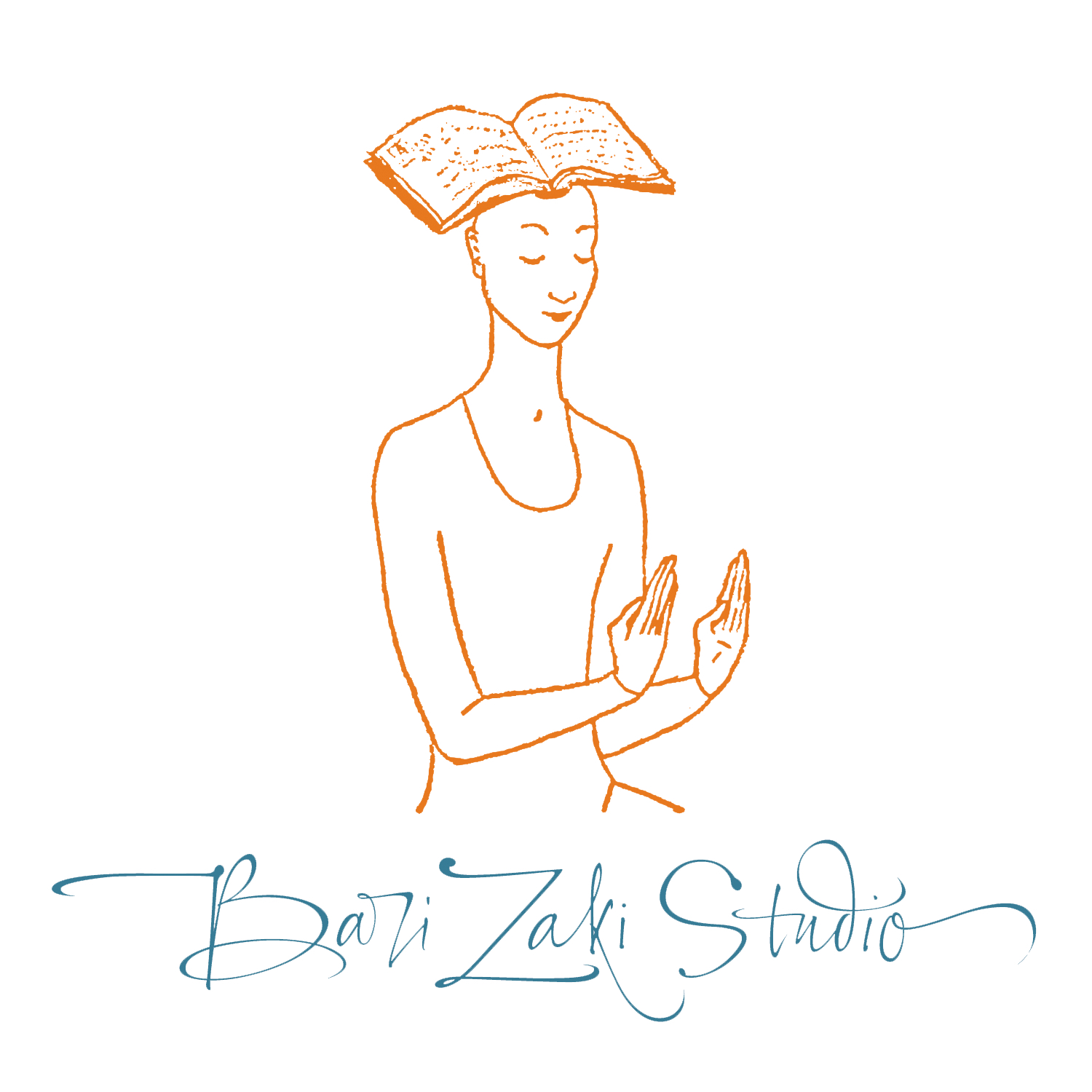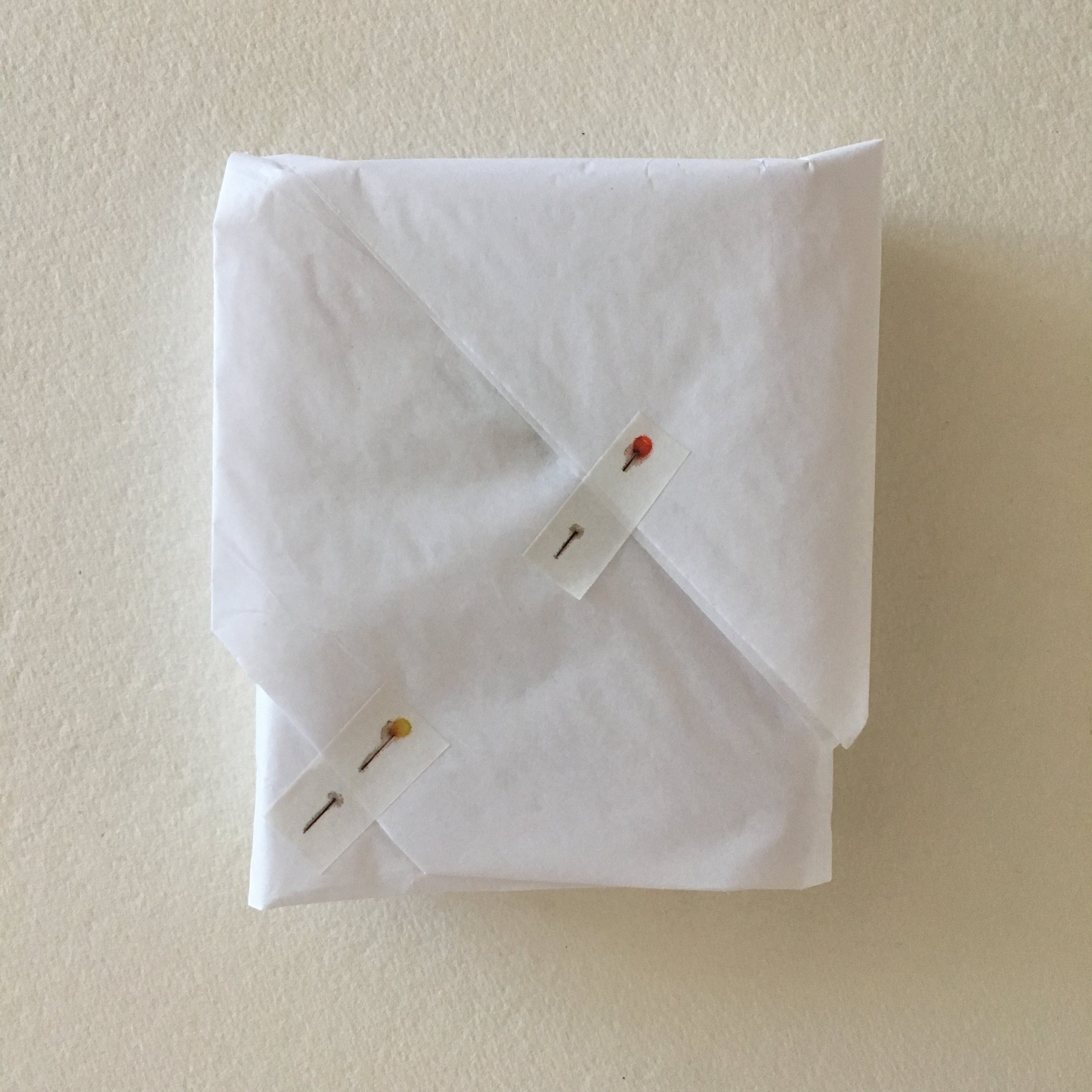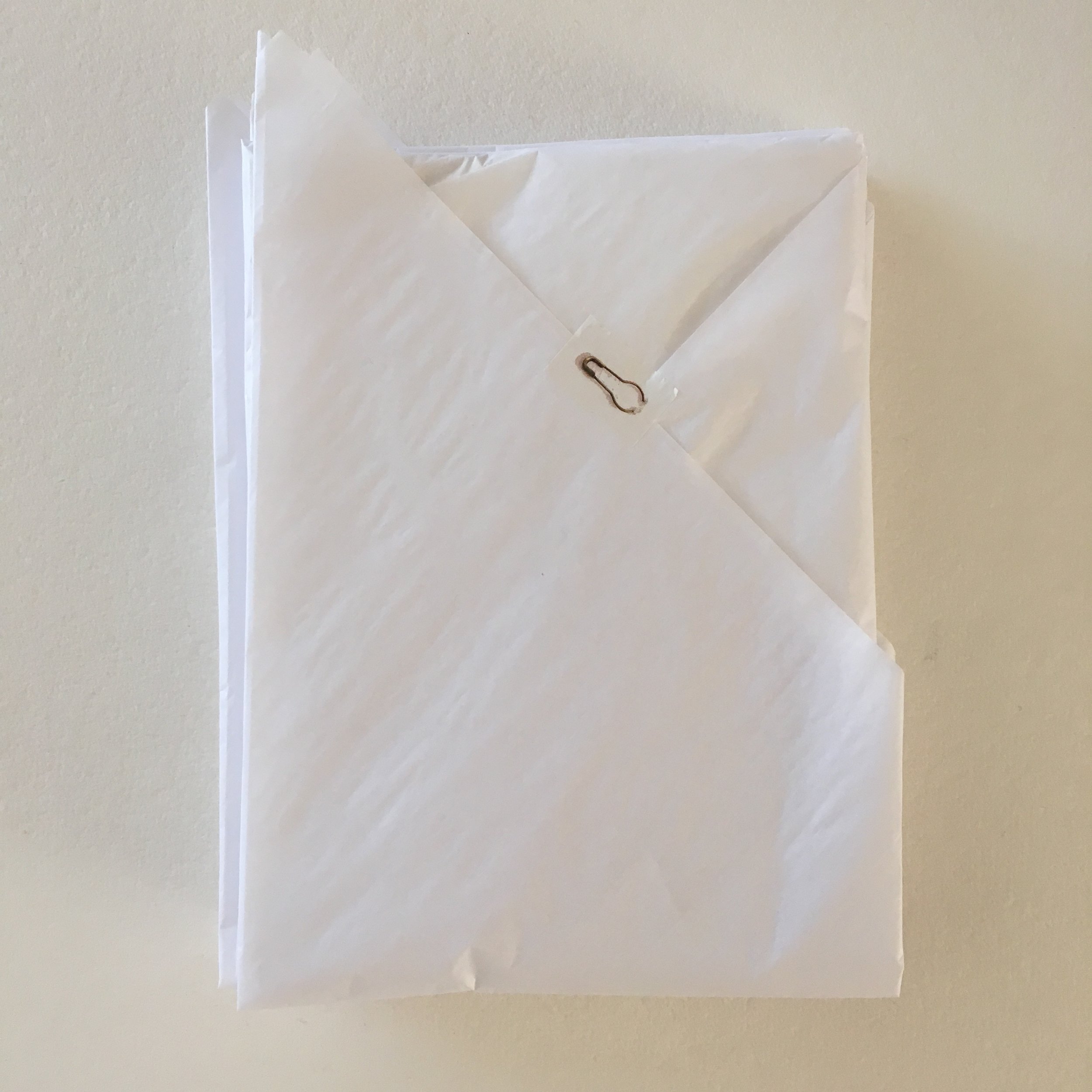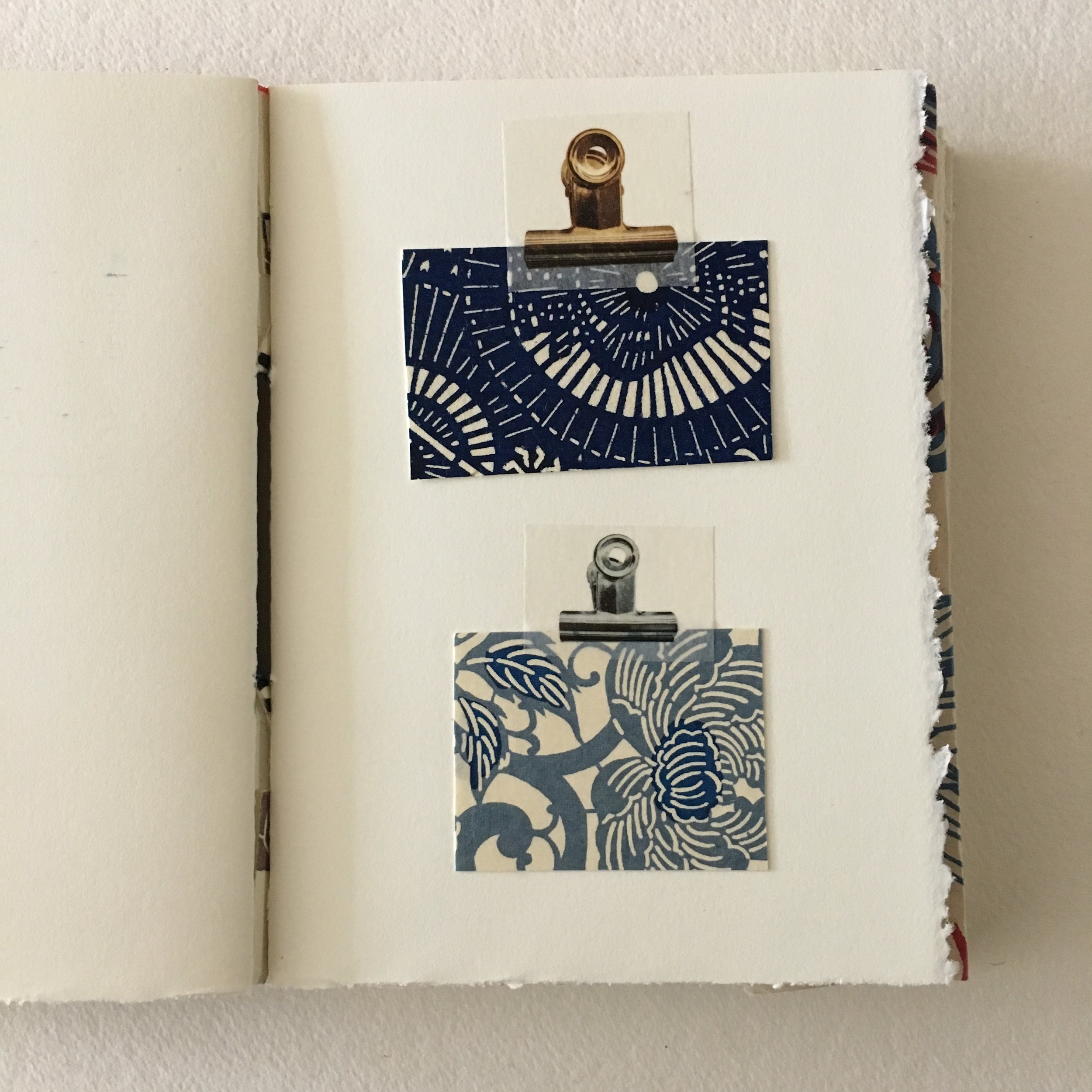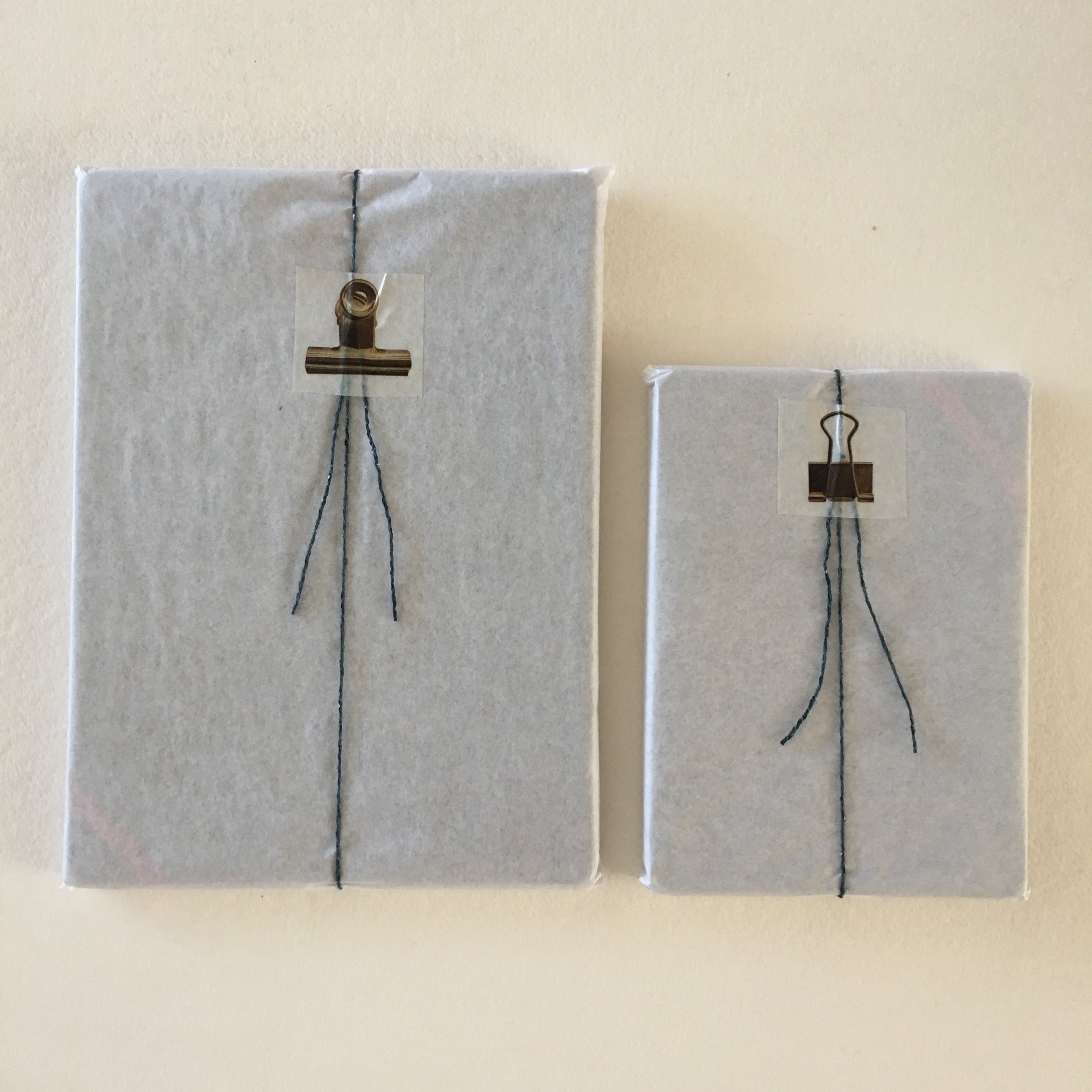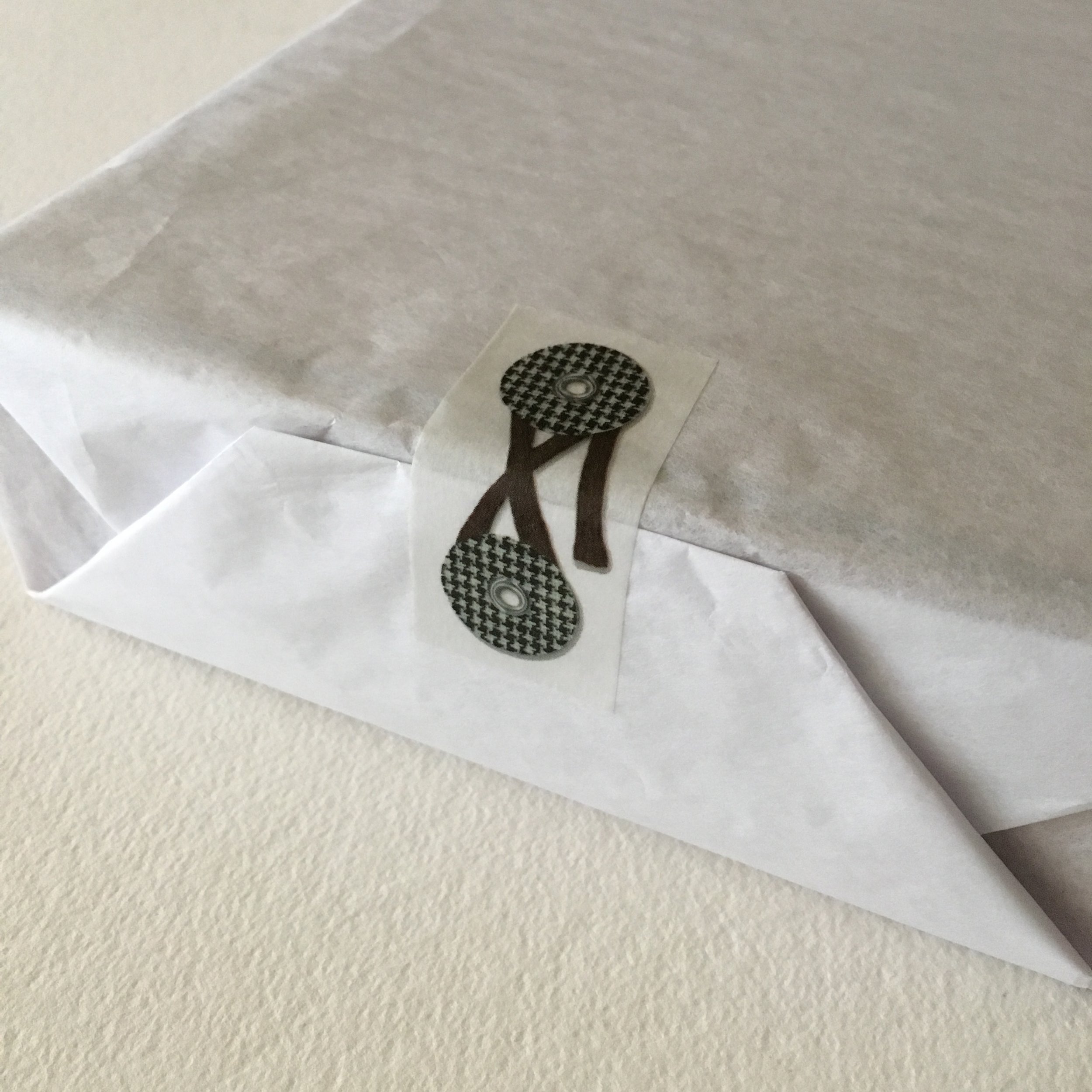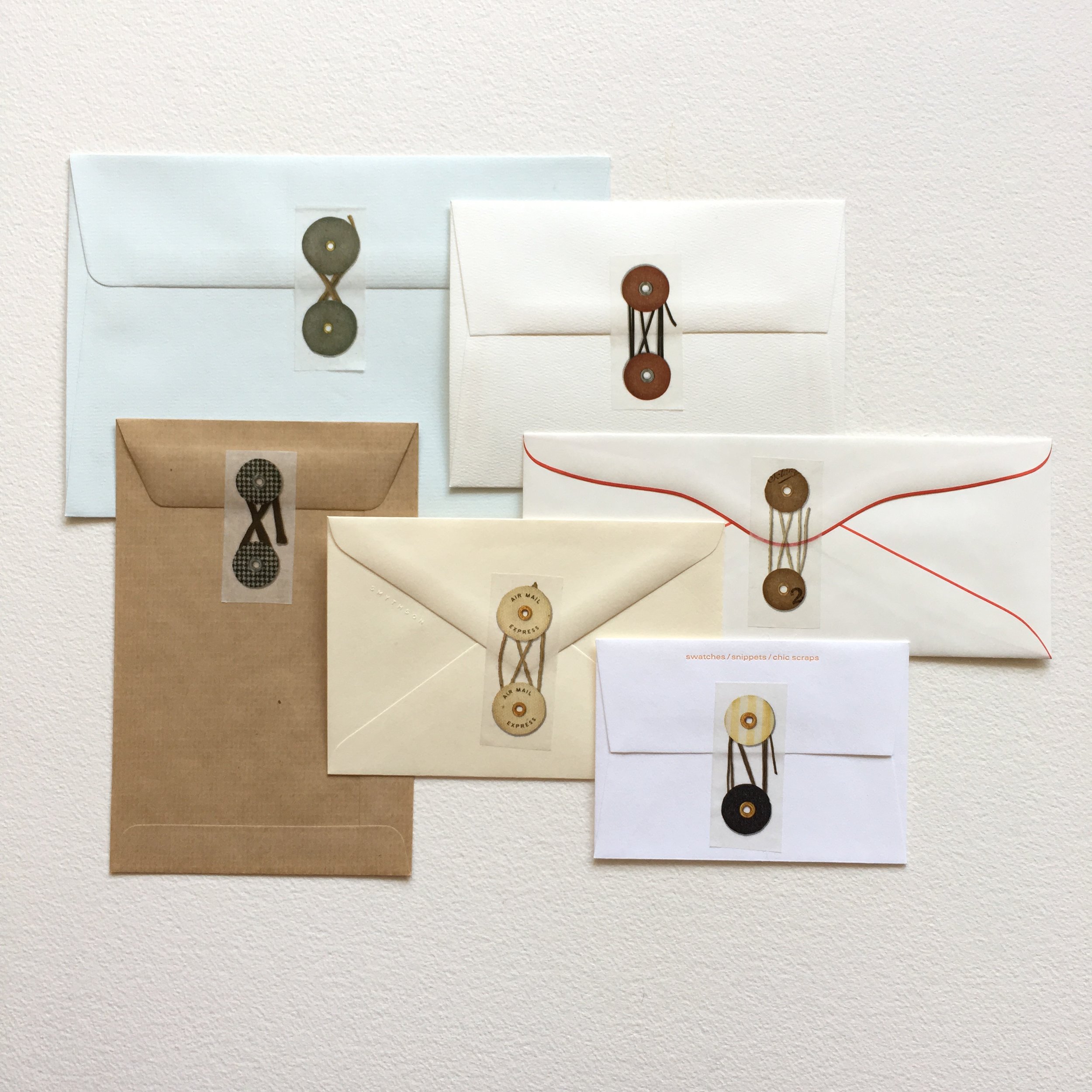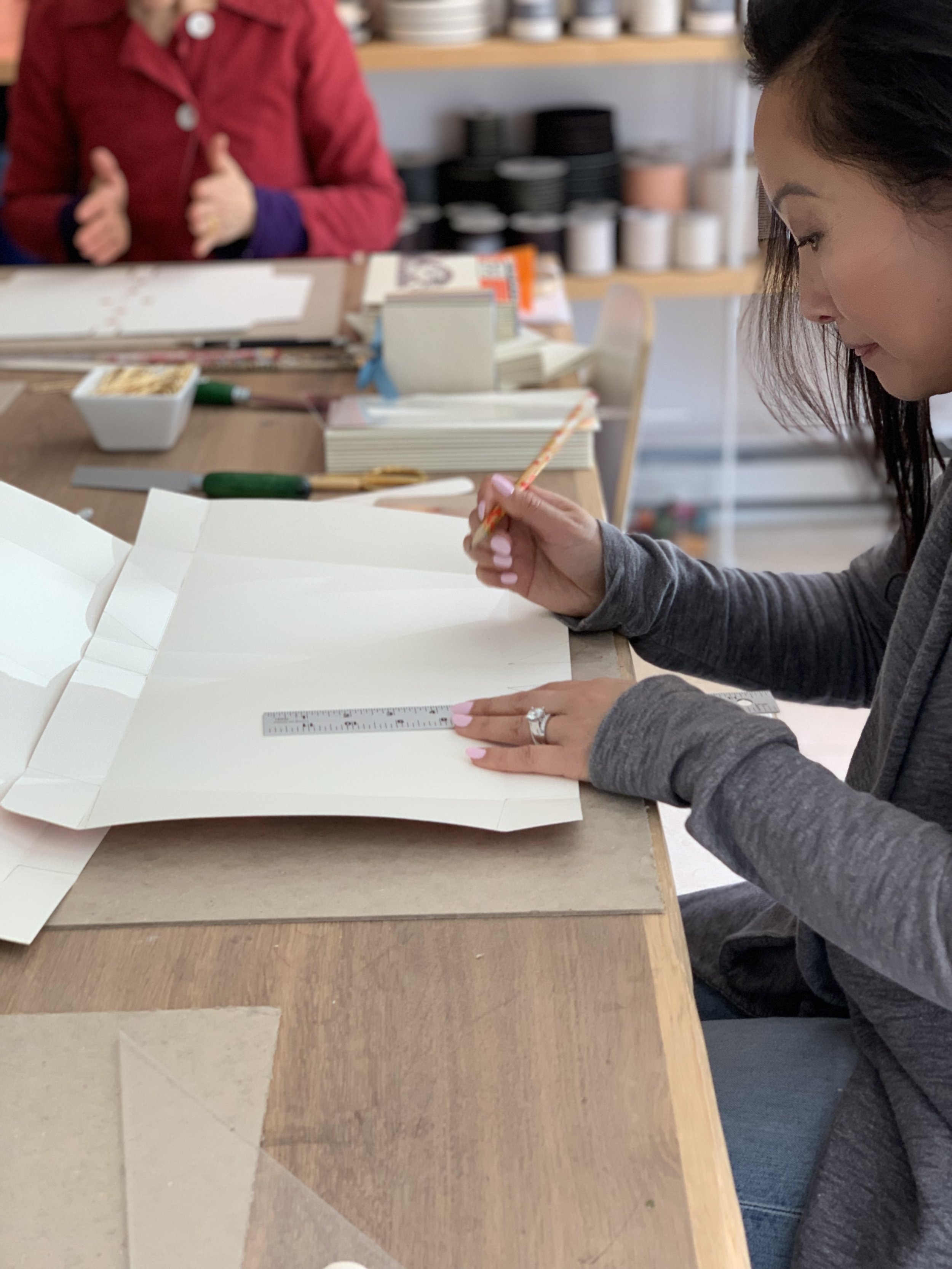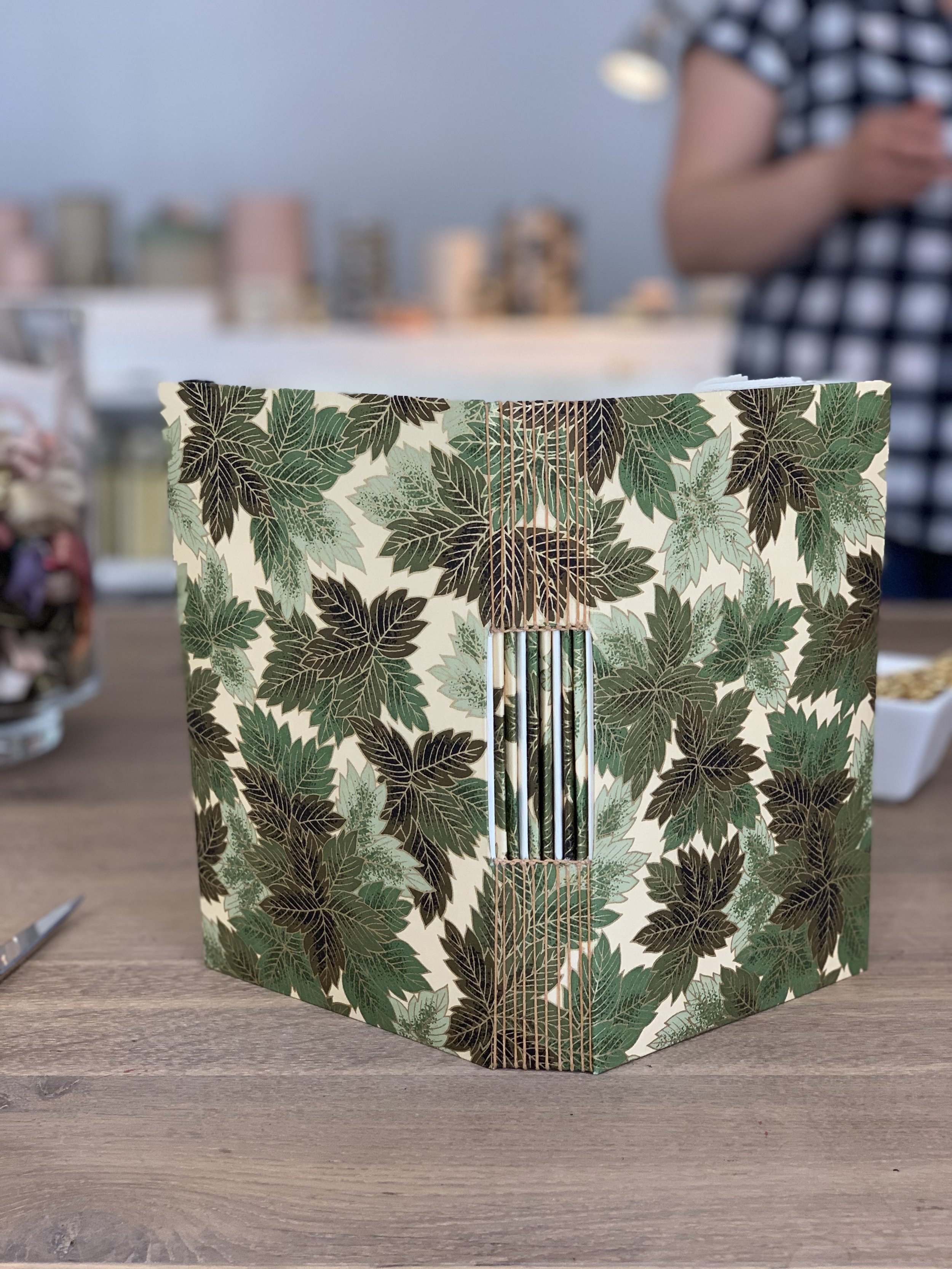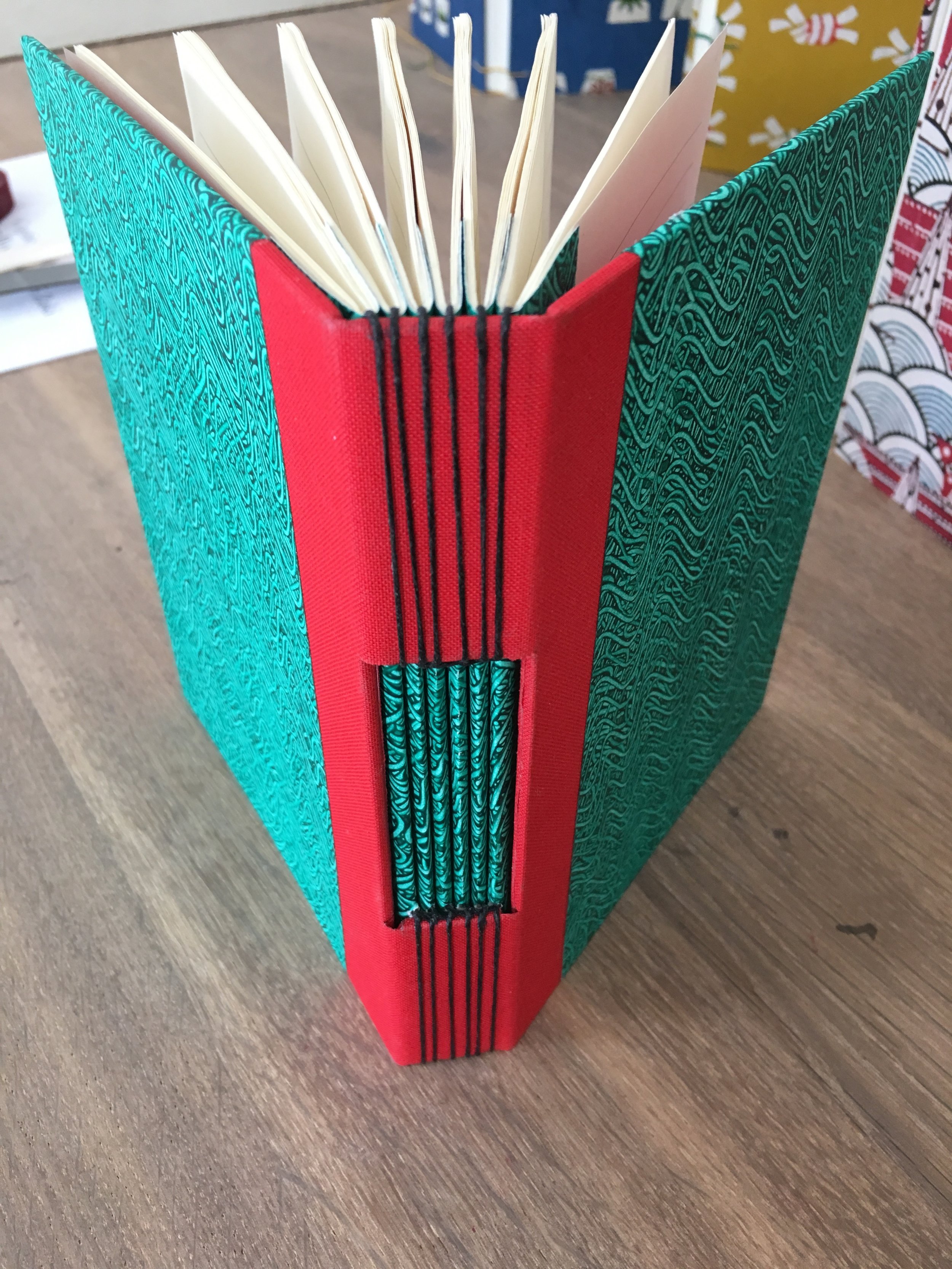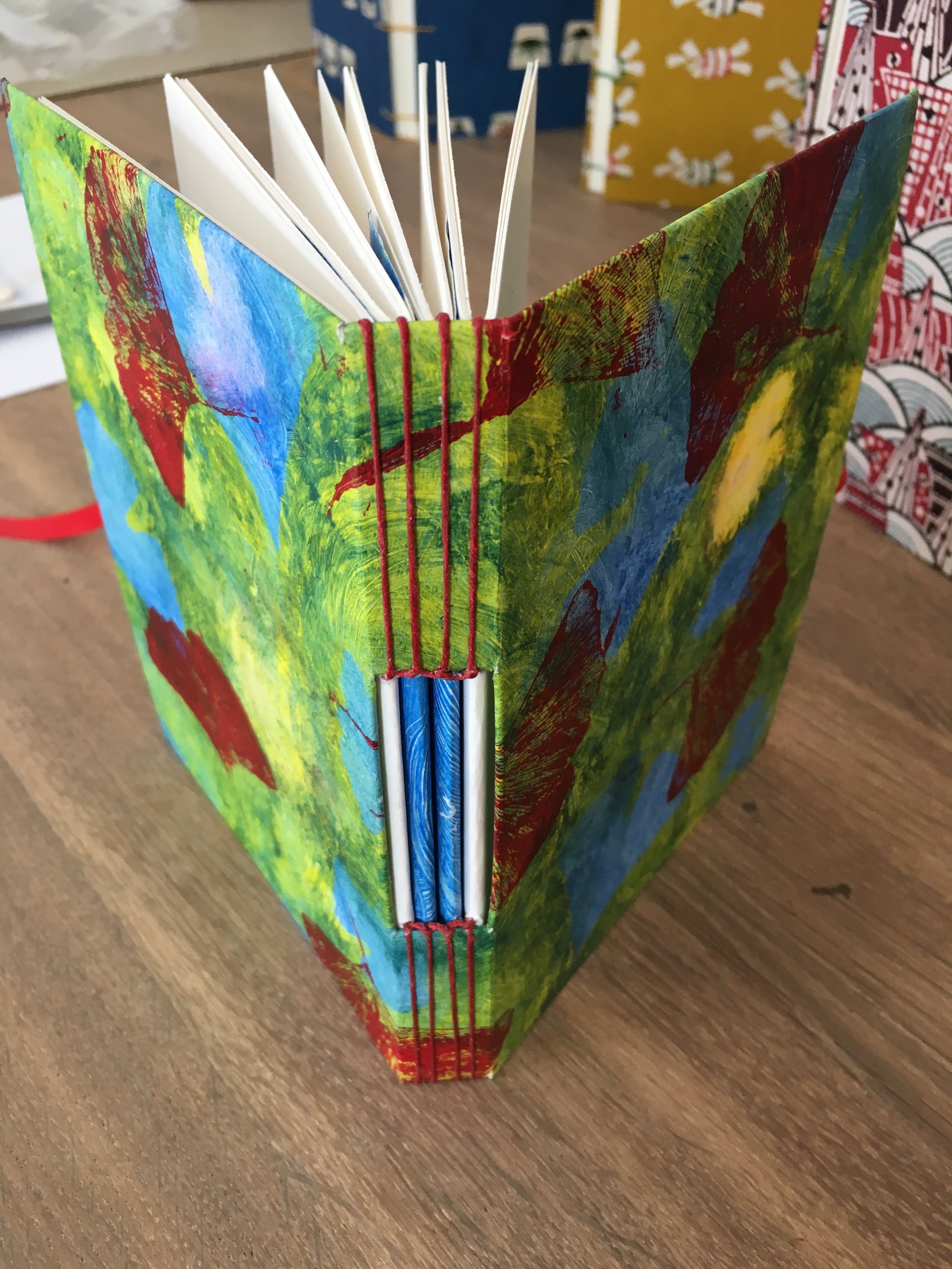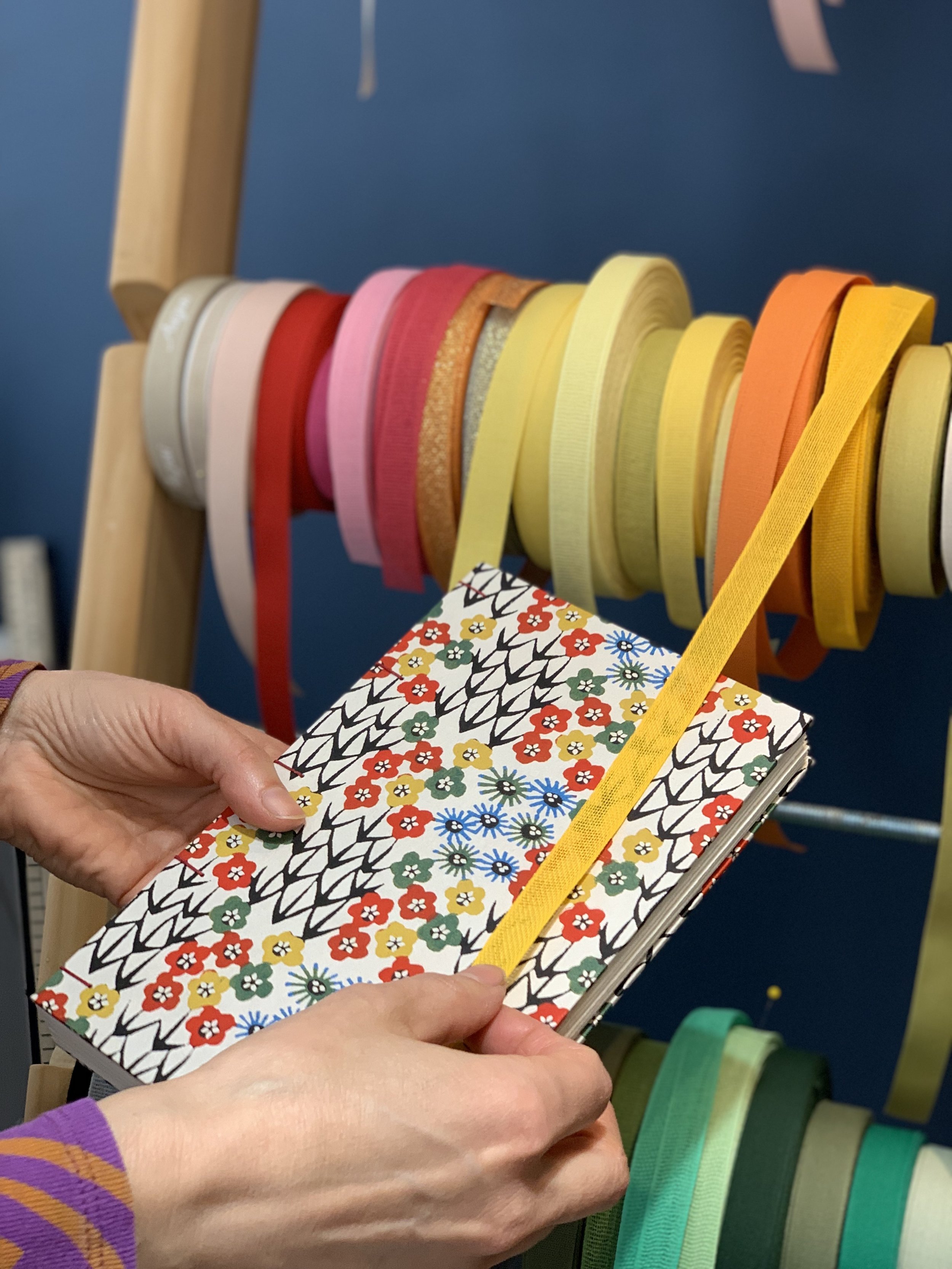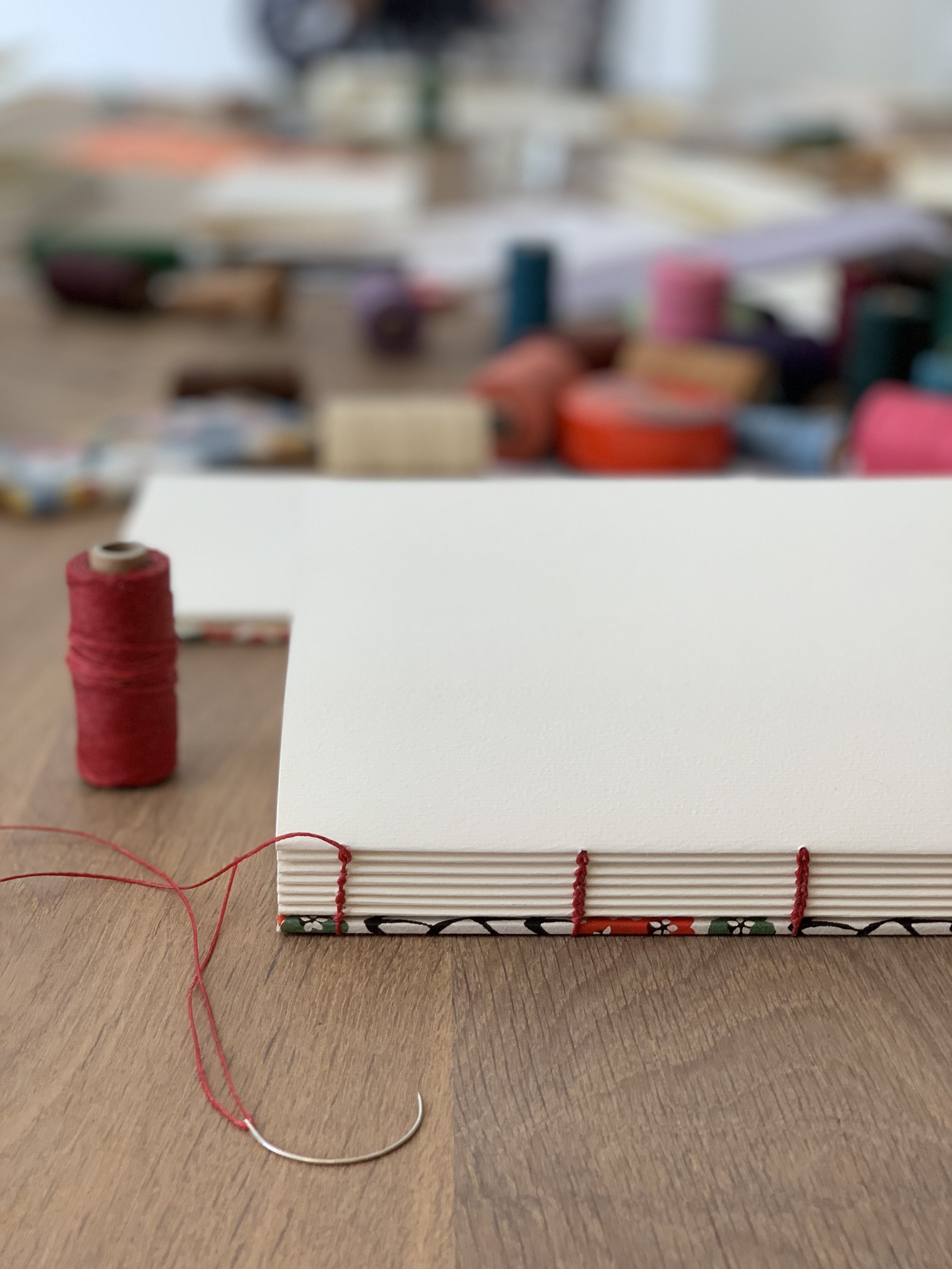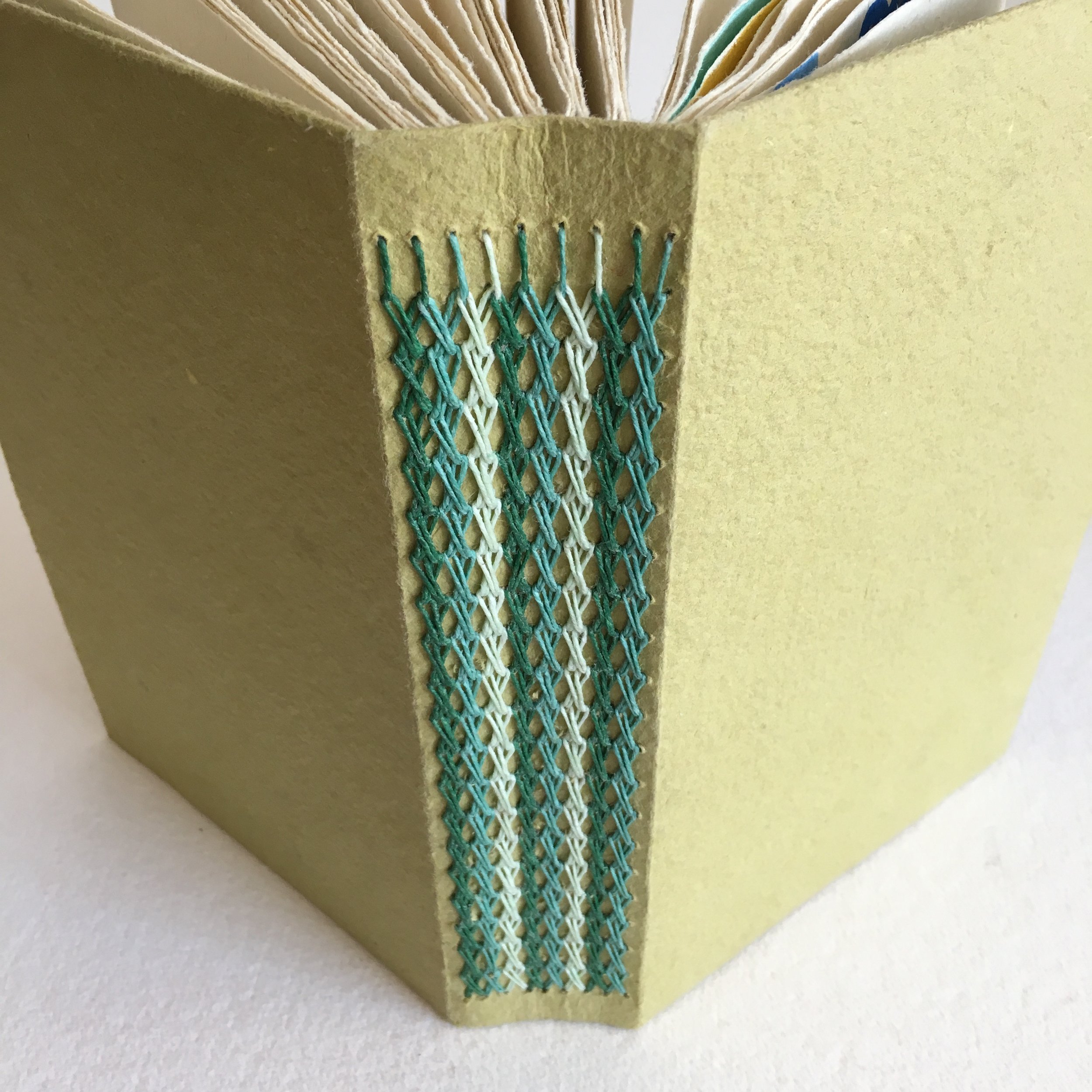Dear Everyone ~
When I visited Boston in the spring of 2018,
my aunt took me to the studio sale of a clothing and textile designer.
In a room full of lovely garments, was a bag full of 3 x 3
hand-dyed linen squares. Yes, they spoke to me, and I did not resist.
I could immediately see them as covers for little books.
I experimented with assorted types & colours of threads,
including pale oranges and ochres. Ultimately,
I bought some undyed Japanese cotton yarn
(just next door, at Knit1).
Though the Japanese-style binding is very sturdy,
the books have a dreamy quality.
The 16 interior pages are crisp Esleeck (a now-closed paper mill
in Massachusetts) Fidelity Onion Skin, from the days of typing paper.
I don’t know of anyone in the U.S. who makes onion skin or
cockle-finish (which was air dried) paper today.
The paper is quite receptive to a micron pen, fountain pen,
or sumi-e brush pen. Lightly applied watercolour would be divine.
The book fits perfectly in a square (3½ x 3½) glassine,
sealed with a dainty bit of washi. The glassine gets an outer wrap
of white tissue on the bias. Fresh & dressy.
Click here for a Little Linen-covered Book
Airily, breezily, calmly,
Bari
